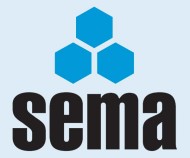 This month we bring you two enquiries, the first regarding Risk Management and the levels of risk involved when installation involves a third party. The second query asks about pyramid shaped end of rack protectors that can deflect a fork lift truck.
This month we bring you two enquiries, the first regarding Risk Management and the levels of risk involved when installation involves a third party. The second query asks about pyramid shaped end of rack protectors that can deflect a fork lift truck.
Risk Management
Q: We are about to allow companies to bid, to supply and install fixed racking.
We already have the beams, and will be purchasing the uprights (Beams are of the same type as the uprights being purchased)
The racking will be to a height of 7 metres, with a depth of 1050 and a span of 3.3 metres per bay.
In the past, we had issues with contractors installing racking, who have had different levels of risk management.
I would also like to include relevant standards / industry guidance to the specification, to ensure that any contractor who installs the racking is using industry best practice methods.
A: We would suggest that any installation contractor should use SEIRS (Storage Equipment Installers registration scheme) trained and qualified labour and should ideally be SAIC registered (SEMA Approved Installation Contractors) who should be using best practice in the work that they perform.
There is a SEMA publication called Guide to Method Statements for the installation of Storage Equipment which would be the basis of a lot of Installation work carried out relating to racking.
Obviously two sites are never the same and such a document would perhaps give some 60% to 70% of what is required and as far as the remainder is concerned it would be down to using a skilled and qualified installation company who would take on the responsibility of assessing the particular risks attached to your site and adapting the standard method statements and risk assessments to suit.
Detailed paperwork needs to be prepared prior to the work being carried out and generally good installation contractors use the SEMA Guide as a base and develop solutions from there as this is a more cost effective approach than trying to re-invent the wheel with every job which is the effect of working from first principles each time.
If you wish to purchase a copy of this document it is available from the SEMA office though it is your installation contractors who are probably more in need of a copy than yourself. There is also a publication which is rather dated now however it is still very relevant and is called the Guide to Erection tolerances for Static Racking. A further publication that is useful to the ongoing task of looking after racking might be the SEMA Guide for the Use of Static Pallet Racking which might also be helpful.
We would suggest however, that if you are able to identify the original supplier then it will be more cost effective for you to get them to provide new load capacities and signage rather than using a consultant who would have to charge out for their time on an hourly basis.
From the description of the work that you provide, it would seem that, in order to obtain uprights to go with your beams then you must have been able to identify the manufacturer and would suggest that the terms of your supply contract for frames should include that contractor assessing the beams for suitability before use, identifying any that are not suitable together with a reason for this and then to provide appropriate load warning notices for the configuration built. There might be a slight reluctance to take on that extra responsibility however most suppliers will accept that this is something that they, as the expert contractor have to take on and apply their guarantee to.
Pyramid Magic?
Q: We are trying to source a pyramid shaped end of pallet racking protector, the type that can deflect a forklift truck away from the end of the rack.
I have heard of something described as toblerone shaped, however this may be something completely different. Could you please advise where I could source this?
A: First of all I am not sure that anything that you place at the end of a run of racking will stop a fork truck with a very careless driver. The truck may weigh several tonnes and be travelling at about 5mph so anything that stops this before it hits the rack will need to be massive!!
Generally rack end protection is intended to absorb minor bumps and accidental knocks rather than a full assault on the racking concerned.
Most rack manufacturers provide barriers on the end of runs of racking which often looks like the Armco style barriers that you see on Motorways and racetracks. Unfortunately the motorway barrier gets a lot of its strength due to the fact that it is tensioned over a long length and this is not feasible with barriers at the ends of rack so the strength tends to be significantly less.
Most manufacturers have offerings on the market that address this issue. We suggest you have a look at various manufacturers’ websites or perhaps talk to a member of the technical staff of a SEMA manufacturer for advice.
SEMA Technical Enquiries
We hope you find the above articles, and those in previous editions, interesting. If you have a query send it to us by fax or email and we will do our best to have it answered by one of our technical experts.
sema Tel: 0121 601 6350 www.sema.org.uk




Comments are closed.